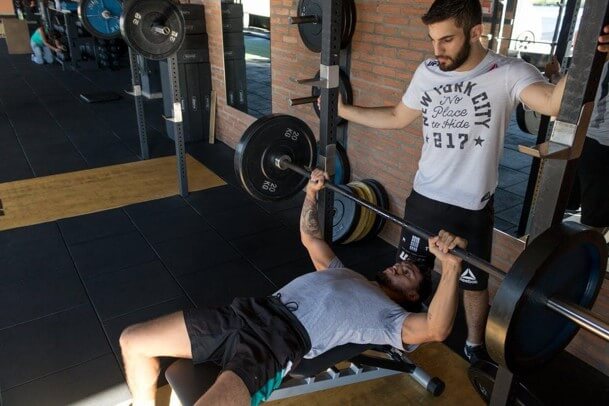4 Truths You Should Know About The Bench Press

The bench press is the most popular exercise in the gym as it helps build a huge and strong upper body. Men appear to be obsessed with the exercise as it gives them the desired pecs.
Monday is known as “International chest day” as men head to the bench press stations to achieve massive pecs. This shows how popular the exercise is among men.
You must get the right weight bench to perform bench press effectively. You would find simple flat or adjustable benches present in the market. Depending upon your requirements, you may pick the best one that assists you in performing bench-press technique.
With all its hype comes a question that whether bench press is worthy of all the attention. Does it actually help develop your upper body and make it stronger?
Well, all of this will be discussed right here. Some truths that you must know about bench press are highlighted in this article. So, let's dig into it.
Unsuitable For Some People
The bench press is not suitable for some people. People vary in their strength and stamina and even their body structure. Owing to such constraints, some people are unable to lift the weights and execute bench-press technique properly.
Individuals having big rib cage, resilient shoulders, and short arms are better able to bench press. If you do not possess such a body structure, then it is going to be tough. And you would probably experience shoulder problems as well.
Therefore, be mindful of your body structure and whether it suits bench press requirements. You may suffer from injuries if you do not pay heed to this very factor before bench pressing.
Unhealthy For Shoulders
The bench press does not necessarily promote healthy shoulders. As you hold your scapula on a bench while lifting your upper arms bearing a heavy load, it disturbs the natural rhythm.
A rhythm exists between the scapula and humerus, in which the arm and shoulder blade must move simultaneously. When they do not move congruently, it frustrates the rhythm.
People with frozen shoulder syndrome have dysfunction in the rhythm, causing the medical condition. Thus, benching might render your shoulders weak.
Not The Best Chest Builder
You might think of a bench press for building your chest. But in reality, the flat barbell bench press may be effective to some extent in building the chest. As the elbow and hand position is fixed in the movement, it requires a lot of input from other muscles, such as the triceps and deltoids.
Also, keeping your feet on the bench may not do the trick. But with the right loads and a heavy bench press, you could pump up your pecs.
However, a heavy bench press is more suitable for strengthening the upper-body instead of the chest. To build a massive chest, you must opt for chest movements, such as squeeze presses and flyes. Also, when heavy benching, target heavy triples instead of singles and take strategic gaps.
Get The Right Set-Up
Bear in mind that benching requires you to perform the right technique to get favorable outcomes. Benching might seem straightforward, but in reality, it is complicated and requires considerable attention to get the right set-up for it.
You must do it correctly with each rep of every set. Each rep comes with a particular step, make sure you do not miss any of those steps. Or else you would not get benching right.
Foot placement: Place your feet at a 90-degree angle at the knee, or a little tighter. Consequently, you can place your feet on the ground firmly, helping you to lift the bar.
Back position: Keep your head, butt, and upper back flat on the bench. However, during lifting, make sure that the lower back is not flat on the bench as it might prevent you from locking shoulders safely.
Hand placement: Go for a grip that keeps your elbows right below the wrists. A narrower grip will avert your elbows from spreading away from the body. Your grip on the bar should be wider than your shoulder-width. Depending on your body structure, decide on how wide or narrow your hands should be.
Shoulder blades: Be mindful of keeping your shoulders back during lifting. It will keep your shoulders safe from any injuries while lifting the load.
Bar position: You must position yourself under the bar, making it easy for you to unrack. Push yourself backward or a little toward the rack to keep your shoulders protected. Also, lock your shoulder blades to keep your shoulders safe.
839GYLCCC1992



Leave a Reply